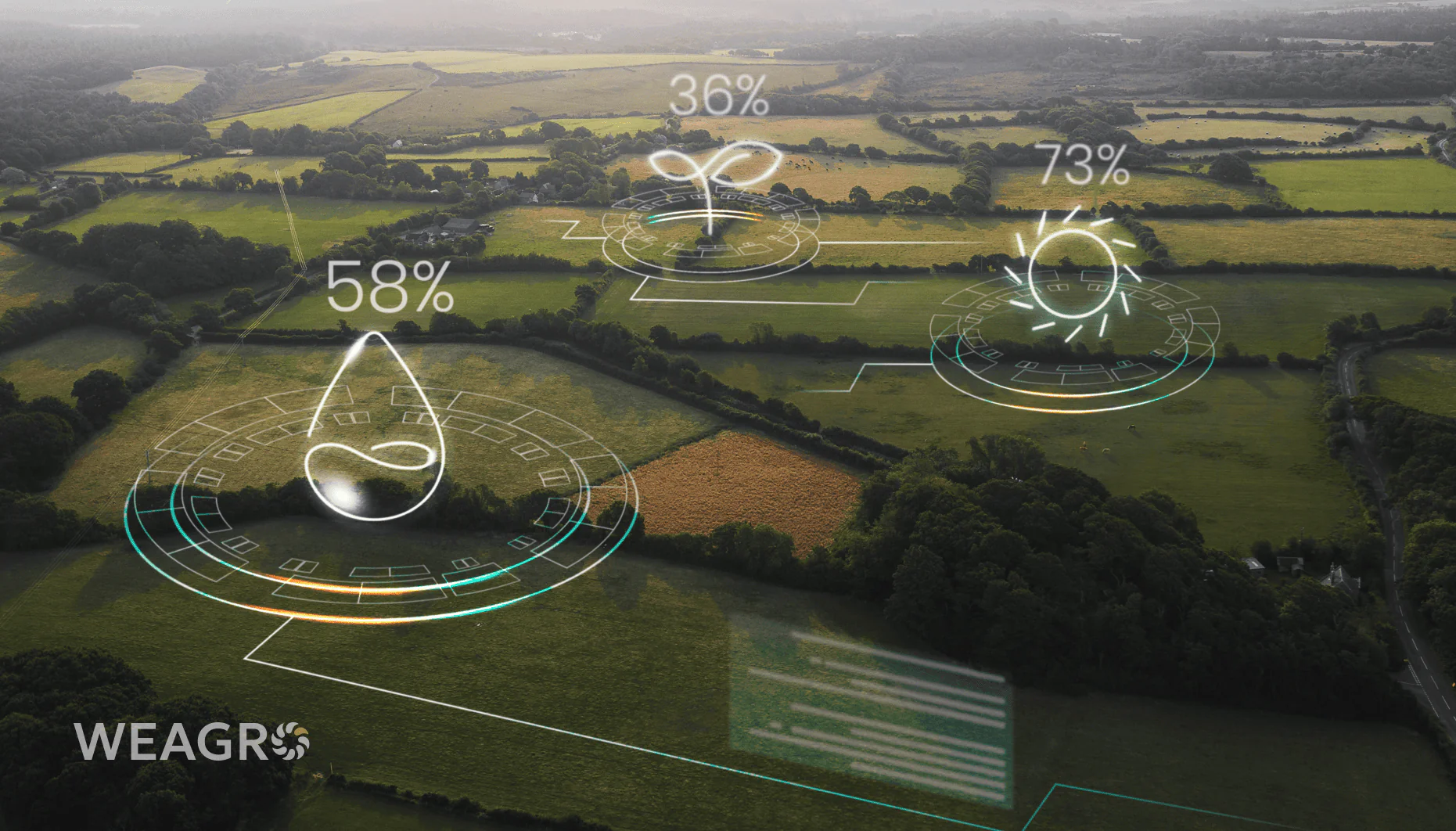Competent financial management is the foundation of effective agricultural enterprise development. Working capital is one of the basic criteria that can be used as a guide in calculations and evaluation of business performance. Understanding the key indicators of its profitability will be useful for farm managers, financial managers, and all those involved in economic issues in the agricultural sector. This will help better understand how to properly apply and use available resources to achieve stability and further business scaling.
What is Working Capital of an Agricultural Enterprise

Working capital is the portion of funds that constantly participates in the production process, as well as the circulation of goods and services, which is necessary to ensure continuous operations. In the context of the agricultural sector, current assets ensure production and, accordingly, the financial stability of the enterprise. Several key components can be identified:
- current assets;
- circulation funds;
- reserves and inventory.
Working capital does not include long-term assets such as buildings, equipment, land plots, and other fixed assets that are used by the enterprise for an extended period and are not subject to quick conversion to cash within one production cycle.
Current Assets
Raw material inventory, products, and other assets that will be converted within one production cycle. In agriculture, this list may include:
- seeds and planting materials;
- feed and additives;
- fertilizers and plant protection products.
Working capital in the production sphere consists of the main resources without which the activity of any enterprise, including agricultural ones, is impossible. Accordingly, they must be constantly replenished to ensure continuity.
Circulation Funds
This is production that has already been manufactured but not yet sold, stored in warehouses until the moment of sale. This category also includes money that the supplier will receive from buyers for delivered products, as well as cash and non-cash funds used for current settlements, purchases, and payroll.
Criteria for Dividing Capital into Fixed and Working
To understand the difference between these two concepts, it will be useful to review the key distinctions. Both financial assets determine the structure and functioning of the enterprise. Fixed and working capital are two components that perfectly complement each other, creating both a long-term material base and supporting an uninterrupted work cycle for development and improving financial stability.
Working Capital
Consists of assets that are completely consumed or sold within one production cycle. This is the foundation for current enterprise functioning, which directly participates in the process. Its value is fully recovered after product sales. Working capital performs functions of financing raw materials, materials and finished products, as well as maintaining business liquidity.
Fixed Assets
This is everything that serves the enterprise in the long term, usually more than one year. This category includes the material base for the production process, which allows creating conditions for product output or service provision. Fixed capital is not included in the finished product composition, but it is subject to depreciation, and its value is distributed over several years, allowing gradual cost recovery and accumulating funds for modernization or renewal.
The criteria for dividing capital into fixed and working are quite simple. Buildings, equipment, machines, and structures participate repeatedly in the production process. Seeds, fertilizers, feed, and additives are consumed in one cycle and return in monetary form. This is the difference between the two concepts: fixed – long-term, working – short-term assets.
Read also: Factoring and factoring operations: what it is and how it works in Ukraine
Functions of Working Capital
Several key tasks can be identified that this tool allows to achieve:
- financing current expenses;
- purchasing raw materials and materials;
- maintaining the necessary level of liquidity;
- timely fulfillment of financial obligations;
- covering short-term debt.
The availability of working capital is critically important for stable operation and development of farming operations.

Own Working Capital
In economics, there are two main approaches to defining this concept, which allow evaluating the importance of this financial resource and its relevance for agribusiness. Own working capital is defined as the portion of enterprise assets used to cover current obligations – from raw material purchases to operational expenses, and most importantly – independent of external loans. It can also be considered as a financial resource that ensures stable functioning and development of the farm.
Additionally, it can be used as an indicator of financial stability and the business’s ability to maintain its liquidity without attracting external capital. In this context, own working capital is the difference between current assets and enterprise liabilities.
Role of Own Working Capital in Agriculture
One of the features of the agricultural sector is that the production cycle is quite long – it lasts about a year. And if in trade it’s important to return funds as quickly as possible, this goal is not relevant for farmers. However, it’s important to properly distribute expenses considering the duration of the operational cycle. Own working capital of the enterprise consists of funds for current purposes, which must be available in sufficient volume. Otherwise, one may face a number of problems:
- shortage of planting materials due to untimely procurement;
- seasonal price increases for agricultural machinery and tools that will be relevant in spring;
- from January, grain prices reach maximum, while during harvest period – rates are 20% lower.
Therefore, the optimal solution would be this cycle: autumn purchase of goods for next work, spring – sowing, autumn – harvest, winter – sales. Net working capital is the ability to freely manage necessary funds without involving external financing sources. This allows maintaining stability even in case of delays in sales or money receipts.
Read also: What Is Installment Payment: Difference Between Credit and Installment
Why Calculate Net Working Capital
Calculating this indicator provides understanding of how capable the enterprise is of maintaining current activities without attracting loans. Based on this, the following can be conducted:
- liquidity assessment – the higher it is, the easier it is for the company to fulfill short-term obligations, and own working capital characterizes the enterprise’s solvency;
- planning and cash flow management – optimizing expenses and income allows avoiding cash shortages and improving overall profitability;
- financial health analysis – to identify potential problems, threats, and risks at early stages for their timely elimination.
Own working capital is determined by subtracting short-term liabilities from current assets and demonstrates the company’s financial autonomy in managing its resources. This can become an important criterion for investors and creditors when assessing solvency and investment attractiveness of the enterprise, allowing obtaining additional financing on favorable terms. High net working capital shows that the business is financially stable and actively developing.
And when needed, agricultural producers can take advantage of the opportunities provided by the online service WEAGRO. This is a convenient tool for interaction between suppliers and buyers, which allows purchasing necessary equipment and planting materials with payment deferrals up to 180 days.
How to Calculate Net (Own) Working Capital
Agricultural enterprise owners find it useful to know how to properly assess own working capital. The formula is quite simple – it’s the difference between assets and liabilities:
Net working capital = Current assets – Current liabilities
To perform calculations, it’s necessary to determine the sum of available funds, including not only finances directly, but also accounts receivable and inventory. And subtract short-term debts and other related expenses from it. Net working capital is calculated using a formula where all parts must be expressed in monetary form. The result allows assessing the company’s balance after covering all short-term obligations arising in the production cycle. A positive value indicates the presence of liquidity to support operations, while negative indicates possible difficulties. And to assess the real state of affairs, it’s useful to calculate net working capital, which will clearly demonstrate the enterprise’s financial condition.
Own Working Capital: Example
Knowing the formula and its main components, it’s easy to perform the necessary calculations. This can be done using the following indicators:
- inventory: 200,000 UAH;
- accounts receivable: 150,000 UAH;
- cash: 50,000 UAH;
- accounts payable: 100,000 UAH;
- short-term loans: 50,000 UAH.
How to find own working capital? Assets: 200,000 + 150,000 + 50,000 = 400 thousand hryvnias. Liabilities: 100,000 + 50,000 = 150 thousand hryvnias. Result: 400,000 – 150,000 = 250,000 UAH. With such indicators, the farming operation has sufficient resources to cover current obligations and further development. But a one-time assessment is not enough: the business owner will have to constantly track dynamics. It’s only necessary to calculate net working capital to assess the effectiveness of the chosen strategy and make informed decisions regarding further growth and development of the agricultural enterprise.
Working Capital Profitability
This is an indicator that reflects the efficiency of using the enterprise’s current assets to generate profit. It is calculated as the ratio of net profit to the average value of working capital over a certain period. Accordingly, high working capital profitability is evidence of successful resource utilization, while low indicates the need to reduce costs and optimize asset management.
Conclusion
Constant evaluation of enterprise performance results is important not only for agricultural sector representatives. Calculating net current assets allows making correct strategic decisions regarding further development or implementing changes.
And in case of insufficient funds or the need to purchase materials or equipment for work before receiving accounts receivable, one can use agricultural installments from WEAGRO on favorable terms.









